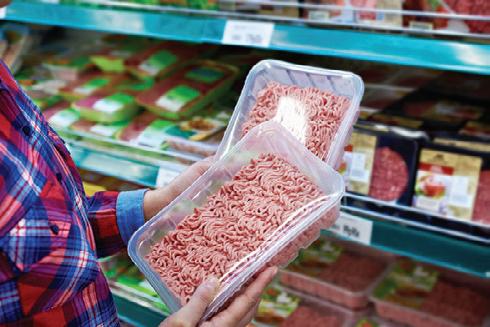
8 minute read
Fairy br ead's key ingredient goes global
Founded in 1947, Dollar Sweets is a family-owned Australian business that makes cake decorating and baking products, confectionery as well as ingredients for the industrial food sector. While it had been exporting for years, exports only accounted for 10% of total revenue so it started working with Austrade to help double this figure by 2025.
Over the past 12 months, Austrade has helped the food manufacturer win over $1 million in new business by taking its beloved ‘fairy bread’ ingredient, 100s & 1000s, as well as its sprinkles and other confectionery to global markets in the US and across Asia.
“We wouldn’t be where we are today without Austrade,” said Philip Holm, Dollar Sweets’ Sales and Marketing Director. “Their teams in Australia and offshore have a wealth of practical experience and advice. Austrade motivates us to keep moving forward with our export plans.”
The company’s export success over the past 12 months has been achieved through Austrade’s help with:
• online business matching meetings and attendance at major trade shows
• introductions to new retail customers and importers
• reconnecting with existing distributors
• seeking new opportunities with multinational customers.
“Austrade did a market selection survey to help us determine which markets held the most potential for our products,” Holm said. “Once we decided on the markets, Austrade shared some key tasks we needed to do for each market. In the US, for instance, it was getting our products certified by the US FDA. Austrade’s in-market teams shared insights and advice, helped us workshop plans and introduced us to distributors.
“Importantly, Austrade acts as a checkpoint for our business,” Holm said. “At our monthly meetings, we follow up on the previous month’s actions and set tasks for the next month.”
Dream entry into the US market
In May 2022, Dollar Sweets took part in a virtual business matching program organised by Austrade. Over three days, it met with 15 US retailers and distributors, including discount retailer 99 Only.
“99 Only placed a $300,000 order for our range of seasonal baking ingredients and products,” Holm said. “We also signed non-disclosure agreements with three large retail chains. We are in ongoing discussions with 10 companies for private-label business. It was a dream entry into the market.”
Buoyed by its success, Dollar Sweets attended PMLA’s Private Label Trade Show in November 2022. The company was one of 11 Australian companies at the Australia Pavilion, hosted by Austrade.
“It was an incredibly successful experience,” Holm said. “We had face-to-face meetings with the buyers we met at the virtual business matching program. We met new potential customers at the event and networked with other Australian suppliers. Austrade also organised trade visits for us.”
Dollar Sweets is in ongoing negotiations with six US retailers it met at the trade show. “If successful, we are looking at total sales worth over $2 million,” Holm said.
Super market in Singapore
Dollar Sweets also launched in Singapore in 2022 after Austrade introduced a Singaporean consolidator to the company’s products at a supermarket promotion. The consolidator, Bemco, then presented Dollar Sweets’ range to NTUC FairPrice, Singapore’s largest supermarket chain.
FairPrice placed an initial order of $200,000 for Dollar Sweets’ bakery range. Dollar Sweets expects ongoing orders will be worth up to $400,000 annually.
“Our products are now in 50 supermarkets,” Holm said. “FairPrice backed the launch with lightboxes, highlighting our brand as an exclusive hero product. That support is invaluable for a first-time exporter like us.”
Reconnecting with distributors and multinational partners
Holm said Austrade has provided commonsense advice that has delivered strong results. One piece of advice has been reconnecting with existing distributors.

“Austrade helped us reinvigorate our business in New Zealand,” Holm said. “After we spoke to our distributor, we launched 10 new lines into the country. This business was worth $500,000.”
Similarly, after speaking with its distributor in Malaysia, Dollar Sweets is now sending six new products to the country. The new business is worth $50,000 annually. Dollar Sweets’ Halal-certified products mean there is strong potential to grow sales in Malaysia. The company developed its Halal-certified products about a decade ago.
Dollar Sweets’ multinational industrial customers provided another entry point to new business in new markets.
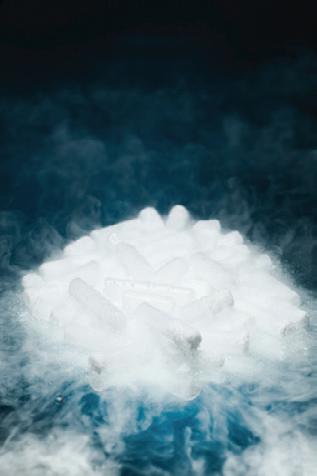
“Austrade advised us to reach out to our food manufacturing customers to see if they could connect us with subsidiaries in other countries,” Holm said. “We picked up new business worth $100,000 with the Thai subsidiary of a major manufacturer after speaking to our contact in Asia.”
With Austrade’s help, Dollar Sweets has developed relationships worldwide with a leading snack food manufacturer. After reaching out to the Indonesian subsidiary, the company is exporting ingredients to the country with an estimated annual value of $250,000.


Future plans
Dollar Sweets will focus on building its business in the US in 2023. The company is exploring opportunities in the UAE, where its Halal-certified products can be readily exported. It also wants to grow sales in New Zealand.
Getting value out of industrial food waste

About 2% of the 36 billion kilograms of food discarded annually in the US is attributable to food manufacturing and processing — with food waste solids sent to landfill or composted, and liquids poured into sewers. However, according to new research, there’s money to be made by finding a second life for the potato peels, fried dough particles, cheese whey and other industrial food-processing waste products that routinely end up in landfill.
Scientists have taken the first step at estimating the best large-scale uses for food processing waste, first analysing its contents and, based on those findings, proposing production opportunities ranging from sustainable fuels, biogas and electricity to useful chemicals and organic fertiliser.
Katrina Cornish, senior author of the study and professor of horticulture and crop science and food, agricultural and biological engineering at The Ohio State University, said this work is known as valorisation, or determining the potential value of something that is otherwise valueless or even a drain on resources for a company — ie, when you have to spend money to get rid of it.
“The bioeconomy is becoming much more prevalent as a topic of conversation. In this case, don’t get rid of food waste — make some money from it,” said Cornish, who is also an Ohio Research Scholar of Bio-Emergent Materials. “Here, we’re putting the base model in place for food manufacturers who are wondering, ‘What can I do with this stuff?’ Our flow chart guides them in a specific direction and prevents them from wasting time trying something we know won’t work.”
The study was published online recently in the journal Science of the Total Environment.
For the study, researchers collected a total of 46 waste samples, including 14 from large Ohio food processing companies, and divided them into four broad categories: vegetable, fat-rich, industrial sludge and starchy. They then characterised the sample contents’ physical and chemical properties and tested some starchy wastes they determined were good candidates for fermentation into the platform chemical acetone.
In the big picture, a waste type’s energy density — based on calorific value — and carbon-to-nitrogen ratio were major determinants for its repurposing potential. For example, fatty waste and mineral-based waste can be digested anaerobically to generate biogas, and soybean waste has enough energy density to be used for biodiesel production.
Low-calorific vegetable wastes aren’t great for energy production, but they are plentiful organic sources of flavonoids, antioxidants and pigments that could be extracted and used in health-promoting compounds.
Based on the analysis of fibrous and mineral-rich wastes, Cornish has practiced what she’s preaching: her lab developed a method for turning eggshells and tomato peels sourced from Ohio food producers into fillers in rubber products, partially replacing petroleum-based carbon black in tires, for example.
“We aligned this work with the Environmental Protection Agency goal to reduce 50% of food loss and waste by 2030,” said first author Beenish Saba, a postdoctoral researcher in food, agricultural and biological engineering at Ohio State. “So, how can you reduce this waste? Valorisation is one method.
“In Ohio, corn is being grown to convert into biofuel, acetone and butanol, and here we’ve identified other sources already available as wastes that you can also convert into those products.”
The proposed conversion technologies require energy to operate and also yield some secondary waste, but the valorisation modelling lays groundwork for further ‘cradle to grave’ analyses that would help quantify the environmental benefits of large-scale food — and other industry — waste reduction, Saba said.
While this study is a starting point, it ideally will offer incentive for food producers to consider the possibilities of making something out of waste products that are currently treated as trash, the researchers said.
“What we hope will happen is that food producers will actually look at their costs and their footprint, and see which of these approaches for their particular wastes will work best — which will be the least financially negative, and preferably profitable, and also minimise any carbon footprint,” Cornish said. “In terms of global warming, any waste that can be valorised has a direct impact on global warming because it has a direct impact on emissions and on the ecosystem.”
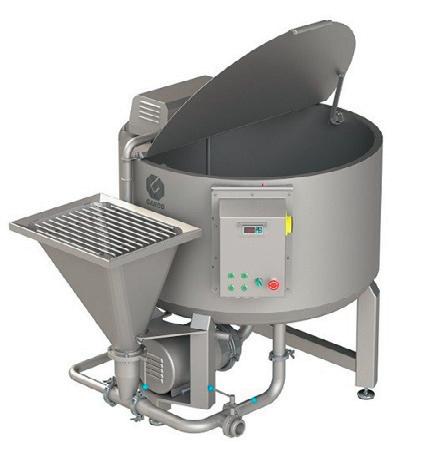


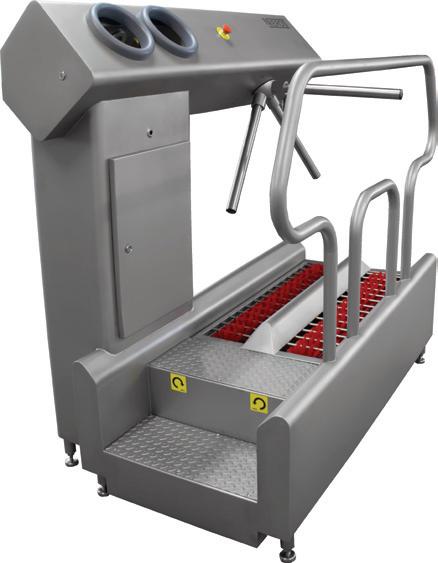





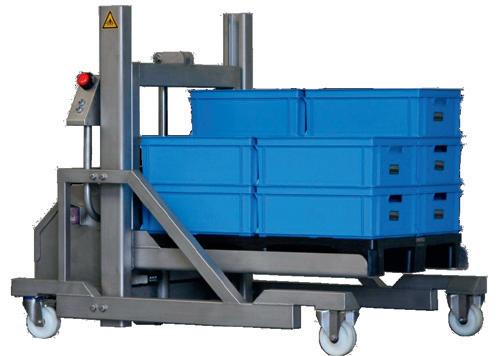

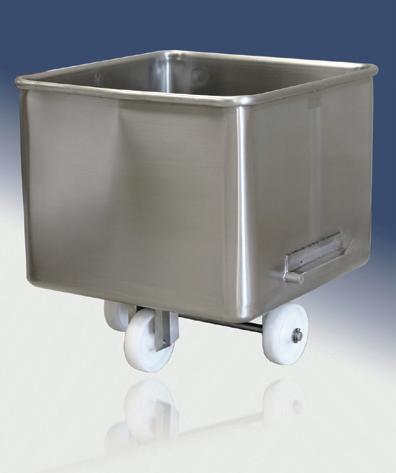
Air monitor for virus detection
Designed to detect the presence of viruses in air, Orium International’s Trio-Bas Airbio.One Rapid-Virus works in combination with rapid methods such as PCR, genetic sequencing, immunoassay, microarrays and mass spectrometry (MS).
The instrument is designed for total pathogen air monitoring of virus, bacteria, yeasts and moulds.

Two applications include: for collecting viruses in a liquid sample for subsequent rapid analytical identification (by PCR) or for traditional impact on agar culture media plate to count colonies (CFU) to detect bacteria, yeasts and moulds.

The instrument is the result of the European NATO project EUCLID CEPA 13 (“protection of personnel against pathogenic micro-organisms via air sampling and rapid detection and identification”).
Cell Biosciences Pty Ltd www.cellbiosciences.com.au
Grain analyser on combine

The CropScan 3300H On Combine Grain Analyser provides protein, moisture, oil, starch and fibre data for wheat, barley, canola, corn, soybeans and other grains and oil seeds directly from the combine. Up to 240 samples may be scanned for every tank or bin load as the grains or oil seeds are harvested. By combining protein and yield data, a set of field data layers are available to help farmers develop variable rate nitrogen fertilisation applications.
The John Deere X9 Series combine is larger than the previous models and has several changes to the clean grain elevator. It contains an installation kit with a mounting bracket to bridge across the seam which is now part of its grain elevator. A fibre optic cable connects the CropScan 3300H Sample Head which is mounted on the outside of the clean grain elevator and the CropScan 3300H NIR Spectrometer mounted inside the combine’s cab.
The product has established an API connection between the John Deere Operations Centre and the CropScanAg Cloud. This enables files to be automatically uploaded into the CropScan 3300H Touch Screen PC mounted inside the cab. Yield from the John Deere Operations Centre will be uploaded directly into the CropScanAg Cloud, allowing farmers to have one location to capture all farm field data collected during harvest.
Also included are the CropScanAg N-GAUGE Harvest Manager app and Nutrient Manager app, which allow farmers to manage harvest data from their smart devices. The harvest manager app provides a virtual storage system in the cloud where the quality data for each tank or bin load are recorded and tracked. Farmers and agronomists can view the field maps for protein, moisture, oil, yield and elevation directly on their smart devices.
The nutrient manager app uses algorithms to compute and display the performance data for each field on a smart device. These performance maps include protein/yield correlation, nitrogen, potassium, phosphorous and sulfur removal, nitrogen use efficiency and water use efficiency. Variable rate fertilisation prescriptions can be generated directly from the app and posted to the John Deere Operations Centre for downloading to sprayers, spreaders or seeders.
CropScanAg cropscanag.com









